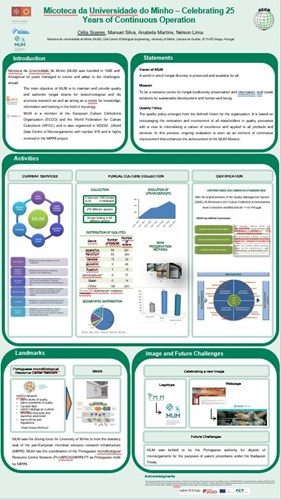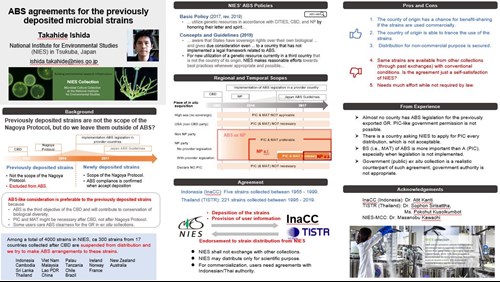Posters from ECCO XXXIX. virtual meeting 2021

In September 2021 NCTC hosted the 39th Annual Meeting of the European Culture Collections’ Organisation (ECCO) which for the first time in its history was held online.
The Relevance of Virus Collection to the Scientific Community
Ellie J Drinkwater
During the SARS-CoV-2 pandemic, and 5 years prior during the Zika outbreak, NCPV has supported the scientific community through the provision of isolates and the experience of its staff. We supported UKHSA’s COVID-19 outbreak response at Porton Down and are providing coronaviruses to scientists worldwide.
Where are the Types of aquatic hyphomycetes?
Christiane Baschien
Aquatic hyphomycetes (AH) are an ubiquitously occuring polyphyletic group of asexual fungi. They are important key players in the decomposition of leaf litter in streams. More than 300 species are described but are underrepresented in public culture collections.
Preserving genetic diversity for education, scientific and biotechnological projects
Cecilia Rad-Menendez
The Culture Collection of Algae and Protozoa (CCAP) is a Biological Resource Centre for living strains of microalgae, macroalgae, cyanobacteria, protozoa and algal pathogens. CCAP maintains nearly 3,000 strains available for research, education, and commercial purposes. In addition, CCAP provides a variety of services ranging from patent deposition, cryopreservation, taxonomy, molecular and metabolomic analysis, training and other consultative services.
Regional Specialised Collection of Alkanotrophic Microorganisms
Irina B. Ivshina
The IEGM Collection is a Unique Scientific Installation, has the status of the Center for Collective Use and is included in the National Research Facilities Registry of the Russian Federation. The volume of the collection gene pool is 3 thousand strains isolated from contrasting ecological and geographical regions – from Perm Cis-Urals to Central Russia and Western Siberia.
Streptomycetes as a source of novel antimicrobial and antiaging products
Paris Laskaris, Georgia Ntroumpogianni, Emmanouela Fotopoulou, Efstathios A. Katsifas, Amalia D. Karagouni
The genus Streptomyces consists of filamentous Gram positive bacteria found mainly in soil that contain an average of 30 secondary metabolite biosynthetic gene clusters and which are responsible for the production of nearly 80% of bioactive molecules. This makes investigating streptomycetesfor the production of novel secondary metabolites that can serve as novel antimicrobial or antiaging compounds of great interest.
Micoteca da Universidade do Minho – Celebrating 25 Years of Continuous Operation
Célia Soares, Manuel Silva, Anabela Martins, Nelson Lima
Micoteca da Universidade do Minho (MUM) was founded in 1996 and throughout its years managed to evolve and adapt to the challenges ahead. The main objective of MUM is to maintain and provide quality and authentic fungal strains for biotechnological and life sciences research as well as acting as a centre for knowledge, information and training in the field of mycology. MUM is a member of the European Culture Collections Organization (ECCO) and the World Federation for Culture Collections (WFCC) and is also registered in WDCM (World Data Centre of Microorganisms) with number 816 and is highly involved in the MIRRI project.
Russian national node of MIRRI and European roadmaps
Vasilenko A., Ozerskaya S., Kochkina G., Stupar O. and Evtushenko L. VKM IBPM RAS (Pushchino, Russia)
ABS agreements for the previously deposited microbial strains
Takahide Ishida
Previously deposited strains are not the scope of the Nagoya Protocol, but do we leave them outside of ABS?
MIRRI SRIA: Strategic Research & Innovation Agenda 2021-2030: Microbial Resources for a Green, Healthy and Sustainable Future
Aurora Zuzuarregui
MIRRI’s uniqueness as a European RI comes from the development of the common and multi-functional virtual platform Collaborative Work Environment. It aims to inspire excellence, provide services and drive collaboration across borders and disciplines, in line with the MIRRI SRIA.









